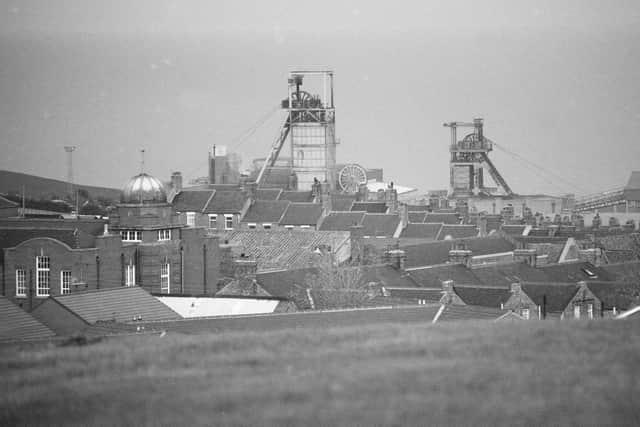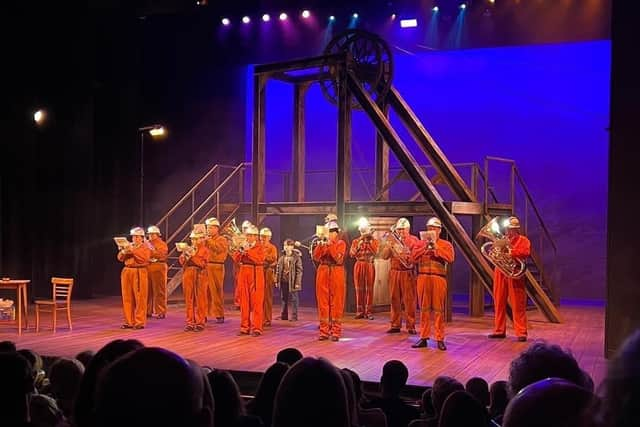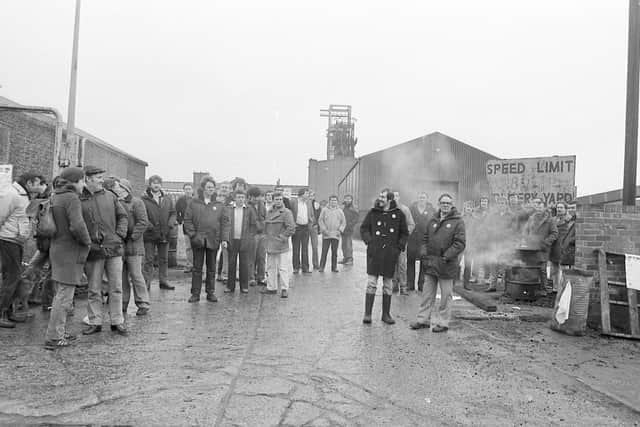Easington Colliery Brass Band: 30 years after the pit closure- meet the band who is keeping its memory alive


For more than 80 years, generations of men and boys descended into Easington Colliery to work the coalface. After all these years, a community had been built as people made their living off the pit.
On May 7, however, the colliery was no more. The UK had moved on from coal, but the closure took the heart out of a village
Advertisement
Hide AdAdvertisement
Hide AdThe soundtrack of the colliery, the Easington Colliery Band, consisted of many fine musicians- the majority of which were miners.


With the closure of the pit, the band lost its home. With the closure of the pit, it could have been possible that the band followed down this path.
However, thanks to the hard work of its members, the band lived on. On the 30th anniversary of the pit closing, the pit’s band is - in the words of its long term secretary- has “never been better”.
Sitting in the last remaining building from the days of Easington Colliery, secretary Peter Lawson painted a picture of the highs and lows of the last three decades for the pit, the band, and those involved with both.
Advertisement
Hide AdAdvertisement
Hide AdPeter has been part of the band for nearly 55 years. This was a career which started at the age of 10 and he swiftly worked from the junior to the senior ranks. When he left school, he was given the options of going away to music college or an apprenticeship at easington Colliery. Peter started working at the colliery in the 1970s and remained there until closure.


Everyone who was involved with the band worked as an Easington Colliery miner in whatever department,” Peter said. “In my time, there weren’t the jobs going around. In my year when we left school, I remember queuing to get signed up for the apprenticeship. There were a lot of apprentices that year going to the different collieries over at Murton, Ryhope, the two at Seaham . they were all still thriving at the time. But after that, they never took many apprentices on at the coal board.
“In the band itself we had ambulance drivers, engineers, a whole plethora of occupations. There was only the odd time when we needed to play in the coal board competition down in Blackpool that everyone was given a rest day. I was given a special rest day on top of the normal rest days you were given for your years work. Anyone not associated with the mine, the coal board would pay their wage for the day of lost work.”
Talking about when it was confirmed the colliery would close, Peter explained the “absolute shock” he felt- but that his view on the news was altered depending on the shift he was on.
Advertisement
Hide AdAdvertisement
Hide AdHe said: “It was strange, at the time I’d been married and we had our first child. My wife was a teacher who was working in Sunderland. Child minding hours had been cut down and I went into the tub loading shift, which was the maintenance shift that started at either 8.30pm at night or 10.40pm at night.
We would then work through until six or seven in the morning. I’d go home, go to bed and then the grandparents would bring the children over.
It was strange- there were rumblings about the possible pit closure and so many pits around the country being closed.
One of the rumblings was that Easington would be closed because it was quite a militant pit and would probably be high up on the list of closures.
Advertisement
Hide AdAdvertisement
Hide Ad“I ended up going into day shift for a few weeks, and the lads I was working with would basically say they were going to finish work and then go and find out what redundancy they would get.
“Two weeks before that on a different shift, the thought never entered my mind. Working with these lads, I started thinking that I would go out and have a look to see what I would get for severance.
“It’s still a shock to me. My wife fully backed the reasons why I did it [leave the pit]. I had a lot of good years at the pit, but there was just that uneasy sense towards the end that ‘oh there’s going to be 180 pits closing, I need to get out before all these miners.’”
The closure of the colliery had a near immediate impact on the band, as Peter explained: “It was strange again because the band rehearsed in the pit grounds. We had our own band hut which was brought in from another pit which was closing at the time- just a big wooden hut. It served its purpose though.
Advertisement
Hide AdAdvertisement
Hide Ad“When there were the rumours of the colliery closing followed by the ultimate closure, we had nowhere to go. We couldn’t go back to the hut and it was one of the first buildings to be knocked down.
“We had over a thousand pieces of music and equipment which all needed to be put into storage.
“We had to go place by place to rehearse until we could get a final room. I applied for a grant from the sport and arts foundation which was part of the pools who put money towards charitable groups- which we were classed as.
“We got a grant of around £20,000 and we bought our own building which was on Shotton Colliery Front Street. We couldn’t get anything in Easington, everywhere was too expensive and didn’t have enough room.
Advertisement
Hide AdAdvertisement
Hide Ad“We got this building and we were able to make it work. There was plenty of storage, we built a library and a rehearsal room. It was good, but it wasn’t Easington. We felt as though we’d lost our identity in a way. We looked to move away from here and it was the owner of a freezer company who bought the building off us for the same amount as we paid for it.
“He then provided us a space in the upstairs of one of the other buildings which was in Easington. Again, we were using this space but the company ended up going bankrupt and we had to leave.
“It was after this I decided to contact St John’s Ambulance Brigade. They owned this building [where the band now call home]. It was in total wreck and ruin, it hadn’t been used much and it had dry rot and damp but we were able to use it for storage.
“They ended up moving out and we bought it outright. We got bits and pieces done to try and stop the damp. I said when it was complete that the St John’s Ambulance could still use it.”
Advertisement
Hide AdAdvertisement
Hide AdGrants during and after the covid pandemic have since allowed the group to finish the building. Around £140,000 and hard work has allowed this to happen. Peter also reckoned that the building- which was once the colliery pay office- is the only remaining working colliery building on Durham’s coast.


Peter said: “Part of the deal I wanted was to make it for the community. Where we are sitting now, the cafe, is what I wanted. It’s all run by volunteers and all proceeds go to the band.
“Next door, because of the renovations, this was two rooms, and where the band practises was also two rooms. The renovation allowed us to make these more workable, making them bigger and brighter. It’s perfect.
“This part of the building is older than the colliery itself. I think this was the foreman’s building from when they were sinking the first shaft. They needed somewhere to have all the charts and information. It’s been redeveloped over the years.
Advertisement
Hide AdAdvertisement
Hide Ad“We found out about a group which gives funding to projects, but it was European funded. This was close to when Brexit was going to happen, and so we had to act fast to try and get the application in before Brexit was to move forward. We had to get everything sorted in six weeks because of the deadline.
“We managed, we got the funding we required. The council came in and fronted £20,000 as the group would only give 80%. This made the whole £120,000 from the grant too and was enough for the work and the new roof.”
In 2023, the band is in a very good place as it continues to perform in events and festivals around the country. Peter said: “In all my 50 years, including 33 years as secretary, the band has never been better than this.
“We’ve got a great conductor who has come in and the hard work and dedication behind the scenes helps so much. The band room is a fantastic environment to play in, but the quality of musicians that have come in is great.
Advertisement
Hide AdAdvertisement
Hide Ad“We qualified last year for the Royal Albert Hall. we played down there in october last year, we’ve not done that in 40 years.
“We played at the last Billy Elliott showdown on the West End in London, we were asked to come down and take part marching on stage. There was Elton John who came over to us and said we were great. Some of the things we’ve got going on are brilliant.
“As part of the Durham Brass Festival last year we were asked to play with a group called LYR. Simon Armitage, who is the poet laureate, is the frontman of it. He wrote poems based on category D colliers around the country and there was a lot of politics in the decision to close these collieries.
“Redhills sponsored the event and got Simon Armitage to write the poems. The band backed his band and it also won the culture award in November. We’ve hit a rich vein of form, whether it continues- who knows. I’m just enjoying every week offered to us.
Advertisement
Hide AdAdvertisement
Hide Ad“We’re in a great place with a great bunch of people in a good environment. We’re all pushing together to push the band forward.”


The band continues to take their music around the country, as Peter finished by saying: “We’re still called Easington Colliery, because that name ‘colliery; means so much to the people of Easington.
“We’re around the country, in May we’re in a competition at the Winter Gardens in Blackpool. We do competitions in Northallerton and around London. It’s amazing how many people know Easington Colliery.”
Easington Colliery Band has outlived the coal mine from which it got its name from. Not only has the band lasted longer than the colliery, it is set to continue thriving well into the future.
Comment Guidelines
National World encourages reader discussion on our stories. User feedback, insights and back-and-forth exchanges add a rich layer of context to reporting. Please review our Community Guidelines before commenting.
